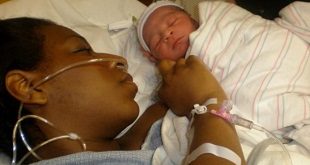
By Ronald Musoke
Its developers are being criticised for using O-level students as ‘guinea pigs’
A recent move by the National Curriculum Development Centre (NCDC) to overhaul the O-Level curriculum and have it in use by 2015 has drawn mixed reactions.
The main feature of the reforms is a whittling of the number of areas students need to study from the current “40-something subjects” to “Seven learning areas”, namely; Mathematics, Science, Social Studies, Creative Arts, languages, technology and enterprise and life education.
Most education experts agree that reforms in the education system are long overdue but they complain that the apparent haste and lack of consultation in this important job — one of the most critical in transforming Uganda— might lead the education sector in a wrong direction.

“By all means, I do support the curriculum reform because we are in an information age; some subjects are more relevant than others, but consultations are very important,” says Fred Masagazi Masaazi, the dean of the School of Education at Makerere University.
He says knowledgeable people within the public and education sector are complaining because they were not consulted about the reforms.
To him, curriculum reform means a total change in the education system, and should involve parents, teachers, MPs, political parties, religious leaders, students so that they own the process from the onset.
Masaazi’s views are backed by UNESCO’s International Bureau of Education, which says a curriculum change must involve a diverse range of stakeholders and ensure relevance of the education by focusing on context, and global, national and local perspectives.
He is also concerned about the speed of rolling it out nationwide.
“If we are rolling out a new curriculum, we should be willing to have it tested for a number of years. It is not a matter of saying; by 2015 it shall be ready.”
Another expert, Mark Byaruhanga, a lecturer in the Department of Foundation and Curriculum Studies at the School of Education in Makerere University says the reason why the education policy has generally failed in Uganda is because it is usually more or less “a one man’s idea” and is always rushed.
“Who brought the idea of these seven learning areas?” he asks, “I can swear that these proposed learning areas are not a product of our own initiative.”
He says to effectively reform the O’ level curriculum requires a more elaborate review of the education system “because the curriculum we are reforming is almost 100 years old”.
“What has failed in the first place, before they came to that?” he asks.
“Two years ago, there were proposed reforms and O-level subjects were further cut from 24 to 14, and before these reforms (could) sink in, new changes are already underway.
“So which one is which and what exactly should we go with (and) what was the real essence of reducing those subjects?” asks Byaruhanga, who is a finalizing his PhD on community participation in curriculum reform.
“The importance of consultations is because the curriculum belongs to everyone. We need to convince the public why something is happening in the curriculum,” Byaruhanga says.
Past mistakes
Hillary Nganda Katunze is one of the confused Ugandans that Byaruhanga possibly has in mind. Katunze says he is perplexed at the rate at which the education curriculum is being changed every now and then.
“They first told us that sciences were compulsory and after this was adopted, they are now coming up with new things,” he says, “This probably means the people at NCDC have no clear direction for the education sector, thus using the country’s students as guinea pigs by trying out anything that comes to their minds on them.”
Katunze asks some pertinent questions: How will higher school certificate (HSC) schools tailor combinations for A-level students from these new proposed learning areas? Has this particular method (curriculum) worked anywhere in the world and how effective has it been?
Peter Sibukule, the deputy headmaster of Kololo SSS supports the overhaul of the O-Level curriculum because, he says, the current one has been too theoretical and devoid of skills. However, he questions the criteria the curriculum developers used to condense the 43 subjects into seven learning areas.
“This is something the teachers and head teachers are not aware of,” he says. “If something new is being introduced, teachers should be able to know to avoid past mistakes.”
He recalls how the government recently introduced the teaching of Information Communication Technology and Swahili in Ugandan secondary schools only to be met with a glaring lack of expert teachers. The education ministry then plunged itself in crisis management by enrolling a few teachers for its retooling programme.
“That experience showed that stakeholders such as teachers were not prepared…If stakeholders are not prepared, then the implementation may be a problem.
“The idea of a new curriculum is good but the issue of (involvement and) motivation (of teachers) should not be ignored.”
Sibukule raises further questions for the new curriculum designers. How much of the content is going to be revised? Where have they piloted this new curriculum to get things right?
Sibukule also expresses fear of job losses.
“The proposal is talking about learning areas such as science instead of physics, biology and chemistry; but how safe am I as a teacher of these individual subjects? We are not sure about our job security,” he says.
Looking deeper
But others, like Byaruhanga, say what needs to be fixed first is the education liberalization policy that has “turned it (sector) into business and proprietors want to minimize expenditure and maximize returns.”
Renowned educationist and MP for Kalungu West, Joseph Ssewungu also believes the problem with Uganda’s education system is not the curriculum.
“We must think deeper than the curriculum reform,” says Ssewungu, “ For instance, why did it take the Ministry of Education and Sports more than ten years to realize that UPE schools were enrolling children below five years?”
Ssewungu says that before NCDC jumps onto the lower secondary curriculum reforms, they need to let Ugandans know how many primary schools are already teaching pupils using the so-called `thematic curriculum’ which was introduced five years ago.
He doubts if up-market private schools like Greenhill Academy and Kampala Parents School that excel in national exams are using the set thematic curriculum in the lower primary classes as was proposed.
Ssewungu is referring to a lower primary school curriculum that ran into trouble shortly after the National Curriculum Development Centre (NCDC) hurriedly launched it in 2007 in a bid to improve reading and basic arithmetic. The thematic curriculum is built around using the mother tongue as the language of instruction in lower primary; P1-P3. Other areas reviewed included physical education, religious education, and the art of writing. It was thought this would improve learning and build the children’s confidence.
Instead, according to a recent investigation by The New Vision newspaper, parents rejected it because studying in the local language weakens the child’s ability to read and write English, which in turn weakens the child’s general learning abilities.
The New Vision investigation found that about 50% of primary schools are not using the new curriculum because the NCDC has failed to train teachers and provide related textbooks and teachers’ guides.
As a result, implementation of the new curriculum across the nation has been haphazard, with pupils being subjected to both the old and new curriculum.
One man ideas
Following the thematic curriculum debacle, Ssewungu notes that changes in the curriculum reforms are necessary but they must be gradual, effective and pupils and teachers must be prepared for the proposed changes.
“When the thematic curriculum was introduced, one workshop was held for one week where one teacher in every class was selected. Is that effective?” he asks.
Ssewungu says one of the weaknesses of the education ministry and NCDC is that they do not fully involve parents, teachers, technocrats, academics and all concerned.
“This business of sitting in Kyambogo (NCDC offices) and they decide what is best for everybody will not take us anywhere,” he says.
Mulumba Mutema, the assistant coordinator of the Curriculum Assessment and Examination Programme (CURASSE) at NCDC is responsible for the new curriculum.
The current curriculum was first designed in 1918 by the British colonialists for a minority of students in order to prepare them for higher education and public service.
Mulumba says since NCDC was established in 1973 by decree by the president-Idi Amin, there has not been any significant change in the curriculum. Content has been added but major areas remain excluded, including important ‘issue’ topics such as democratic education, HIV/AIDS, health education, environmental education, financial literacy and interactive skills.
When the content additions by NCDC became too many, were overlapping, and had become obviously outdated, the institution decided in 2006 to reduce the O’ Level subjects from 43 to 31 and make sciences compulsory.
Then in 2009, another education ministry policy statement recommended that schools teach only 14 subjects; eight compulsory subjects and six electives. These are now being whittled down further into the so-called seven “learning areas”.
Mulumba says a number of stakeholders; such as District Education Officers, Principals of national teachers colleges, alongside the team writing the curriculum have been working over the last one year. He said public consultations have also been held.
He says more sensitization will follow soon and this will target political leaders, NGOs, faith groups, opinion leaders in the education sector, parents and the students. He says fresh ideas on the new curriculum can still be sent to the NCDC.
He says that rather than Ugandans trading blame, everyone must contribute to the new reforms in the curriculum.
“If you get into a venture with the attitude of failing, you are most likely to fail. The process has just started,” Mulumba says, “The needs of the learner, the knowledge and technological changes are too fast that they need to change the curriculum every year while content should ideally change every three years.”
Donors dictate
He says the reform is part of the Universal Post-primary Education and Training Project which is partly being funded by a US$150 million World Bank loan to the government. It is being implemented by NCDC with technical support from Cambridge Education—a UK based education consultancy. The loan is to finance reform of lower secondary education curriculum, examination and assessment. It includes associated teacher education and reorienting the subject content to include pre-vocational knowledge and skills.
Interestingly, however, the 40-months project which started in October 2011 ends in early 2015; the time when the new curriculum is actually supposed to be rolled out. Question: Why are the funders of the project not curious to hang around and see the outcome of the labour and funds?
Mulumba, a jolly man with over 20 years teaching experience at secondary and university level, easily reels off the problems that have plagued Uganda’s O’ Level curriculum and necessitated the reforms.
“For generations the curriculum has been overloaded and it has failed to impart survival life skills that can make students effective and successful in life,” he says.
He says attempts to reduce the overall number of subjects, mainly by grouping existing ones have been made but this has not been satisfactory partly because there has been little consensus on what should be removed from the curriculum to ‘lighten’ individual subject load. That approach, Mulumba argues, could not lead to the kind of curriculum required by Uganda.
He says Uganda’s education system has also lacked a curriculum framework and philosophy.
“Progressive countries like Singapore teach their primary pupils to know what Singapore is all about. In secondary, students are taught what it takes to lead Singapore,” Mulumba says.
He adds: “In the Netherlands, Dutch students are made to understand quite early that God created the Dutch and the Dutch develop Holland and this is the mentality they grow up with. This has been glaringly lacking in Uganda’s education system.
“We hope that this philosophy can try to emulate most of the philosophies of progressive countries since we have done a lot of benchmarking for international practice to produce graduates for the international market.”
He says the proposed curriculum focuses upon learners acquiring a balanced set of understanding, skills, and values to enable them to participate in a technology-driven global economy, solve problems in their communities, and operate effectively at national and global level.
“The target is to ensure that all O-Level graduating students can think critically and study effectively by acquiring pre-vocational skills that render them employable,” he says.
Uganda National Examination Board (UNEB) chairman, Fagil Mandy, says the proposed reforms will help Uganda produce the needed all round human resource.
Labour market demands
Uganda’s education system comprises non-compulsory pre-school for three to five-year olds, followed by seven years of compulsory primary education for six-12 year olds.
Advancing students aged 13-16 then do four years of lower secondary education (O-Level), followed by two years of upper secondary (A-Level).
Successful A-level graduates go to university or to a range of other tertiary institutions while the rest drop-out. Unfortunately, most are not absorbed into the labour market and Uganda has one of the highest youth unemployment rates in the world at over 80%.
The Makerere Education Dean, Dr. Masaazi, says the problem starts at O’ Level which is critical in the Uganda education system because “it is the starting point for building a student’s career”.
In other words, there is disaster if anything goes wrong at O’ level. Unfortunately, a lot has been going wrong.
A recent labour market survey was conducted by the NCDC and the National Water and Sewerage Corporation (NW&SC) to ascertain the set of generic skills expected by contemporary employers.
The survey showed that the labour market is looking for workers who are trainable, task-oriented, and team players. They must have good time management, and oral and written communication skills.
But Uganda’s O-Level leavers lack basic skills, such as communicating effectively orally and in writing, in English, cannot follow written and diagrammatic instruction, understand abstract concepts, use mathematics, and are computer illiterate. They cannot solve problems, test hypotheses and lack adequate interactive skills.
Mulumba and other experts say such skill gaps necessitate a ‘sweeping revision’ away from a strictly academic list of subjects, each with clearly defined knowledge content to a ‘framework of competencies’ that are woven across and delivered through subject areas.
“Such a set of competencies must serve both those who opt to further their education along an academic track and those who directly enter the world of work,” he says.
Uganda’s drop-out problem is big. In 2010, for example, 520,000 pupils sat the Primary Leaving Exam but at O’Level the number shrunk 50% to 264, 000, and by 80% to just 100,000 candidates by the pre-university entry A’ level exams. Of these, only 35,000, or just 7% of those who started the academic cycle in P7, managed to squeeze into university.
Despite statistics showing that up to 70% of those who drop-out must find jobs in the agricultural sector, the education sector outside of university puts most emphasis on health, education, commerce, and technical schools. A survey of tertiary institutions reveals 10 health institutions, and only two agricultural colleges.
The current curriculum reform is a response to the 2004-2015 Education Strategic Plan which proposed new ways to improve the quality and relevance of secondary education. It is, however, unclear how moving from 14 subjects to the seven learning areas at O’ level, will either improve or make education more relevant.
As Byaruhanga, who is a curriculum development expert, says, there is a misunderstanding whenever the education system is criticized as not practical.
“What do we mean by practical education?” he asks rhetorically, “Practical education is not about computer lessons, making tangible things like chairs and tables or going to the farm to dig.
“Any knowledge you are taught and you get to know how to apply it is practical. Making a subject practical is making it closer to the students.”
O’ Level Curriculum Reforms
- 1918: British colonialists launch first curriculum.
- 1973: NCDC established by decree by President Idi Amin
- 2006: Subjects reduced from 43 to 31
- 2006: Physics, Chemistry, Biology made compulsory
- 2010: Subjects reduced to 14
- 2012: Subjects abolished, replaced by “seven learning areas”.
Main concerns
- No curriculum framework
- No curriculum philosophy
- Subject over-load
- Subject over-lap
- Exam oriented system versus continuous assessment
- Disagreements over curriculum reform approach.
- No consensus on reforms i.e. how to group subjects, what subjects to remove.
- How to employ school drop-outs in global labour market
Objectives of Reform:
- Provide graduates with a balanced set of knowledge, skills and values
- Produce graduates for the international technologically driven
 The Independent Uganda: You get the Truth we Pay the Price
The Independent Uganda: You get the Truth we Pay the Price



